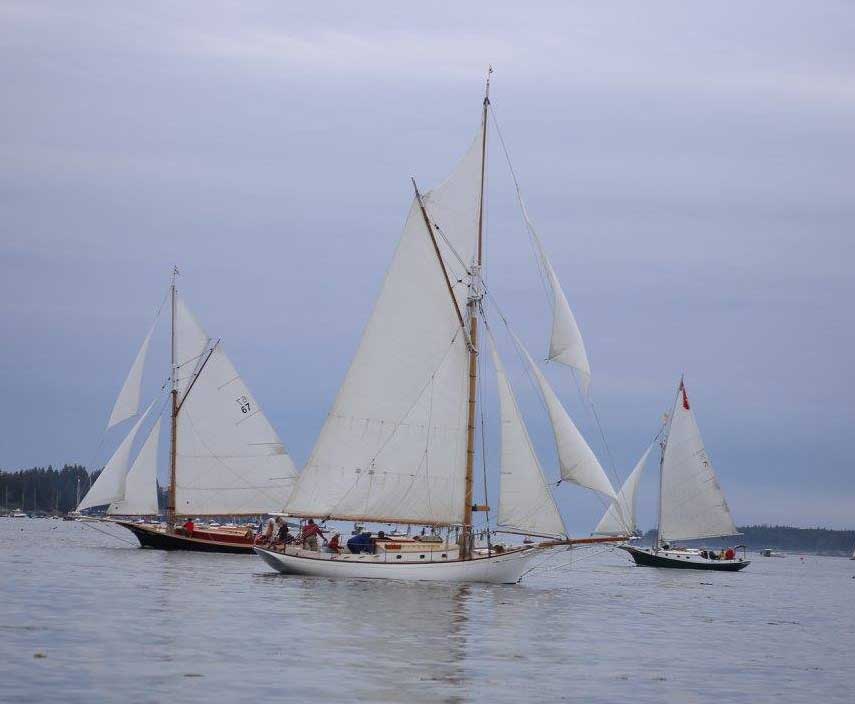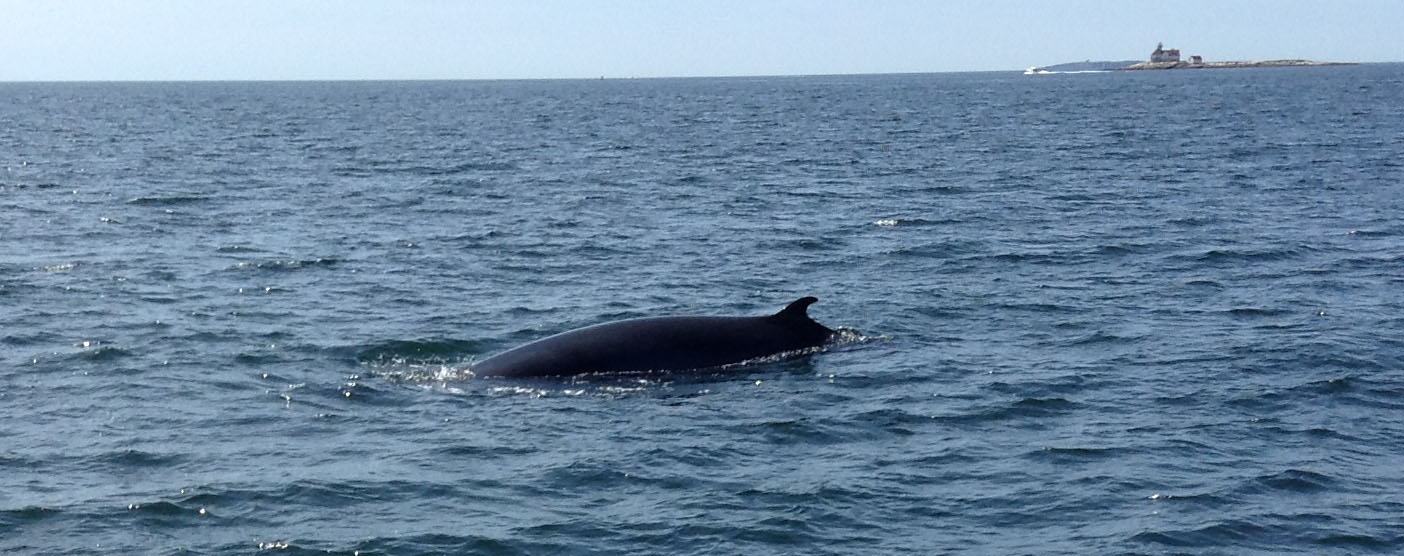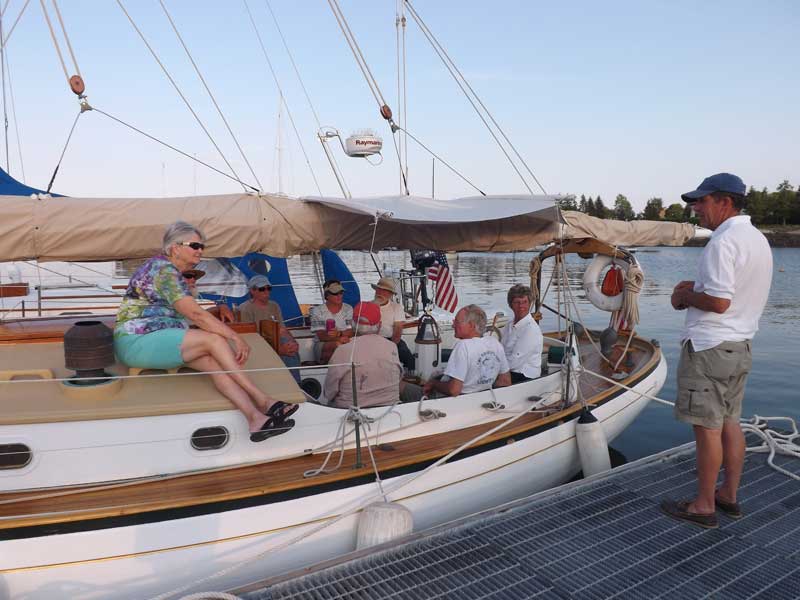Both the woman who will willingly get up in the middle of the night and stand anchor watch, and I try to keep up with our connections in the maritime world. We subscribe to at least six maritime oriented magazines, talk with and socialize with a fairly wide circle of other sailors, and even read something called newspapers. I should say that I spend almost no time on social media and rely on the woman who will willingly get up in the middle of the night and stand anchor watch to let me know if something interesting in the marine world pops up on facebook. It has only been in the last few years that I have become at least peripherally aware of YouTube channels on sailing and boating. I have not spent a great deal of time looking at these channels, nor, based on what I have seen, do I intend to in the future. Now, before anyone takes offense, just realize that I would rather be doing than watching anyway; so vicarious sailing is not really my thing.
I am not hear to bash anybody and your tastes may be very different than my own when it comes to YouTube videos, so let me just say that a number of channels are either about sailing in the tropics: been there, don’t like the heat and humidity, or crossing oceans, and my personal feeling is that leaving is great and arriving is great, the middle, not so much. So that rules out a lot of channels for me. Secondly, a number of channels that are truly about sailing tend to be almost exclusively about sailing modern cruising boats, which means they spend a significant amount of time explaining how they maintain the multiple systems on the boat, or how they can’t get parts for the systems on their boat, which doesn’t particularly interest me either. There also seem to be a number of channels that are more about the relationships between members of the crew as they sail to wherever, which frankly turns my stomach. However, if any of that stuff sounds fun to you it looks like there is a lot to watch, and that’s fine too. Just because it is not my thing does not mean it isn’t interesting, it’s just not interesting to me.
Now that I have gotten that out of the way, there are four channels that have caught my interest. I think each is unique and each has something to offer. Two are truly sailing related and then two are strictly speaking about boat building (in wood).
First on my list is Dylan Winter’s Keep Turning Left. Dylan’s goal was to inexpensively circumnavigate the British Isles. I have not watched all of his work, or even the majority of it, nor do I realistically think I am going to get around to binge watching his episodes (or anything else for that matter, I have wooden boats remember) but I will say his posts are extremely well made, and quite captivating. He has been at this since 2008 and before that he worked professionally in video so the quality is outstanding. His most recent videos are just short sailing shots, but his longer episodes are worth watching. Full of current impressions, observations of nature, and historical narrative, Dylan is an incredibly well spoken narrator, capable of exploiting the richness of the English language, not above expressing a personal opinion, and brings a knowledge of craft to his posts that put his work firmly in the realm of professional film worth watching, head and shoulders above everything else I have seen. So that’s my recommendation for you armchair sailors, check out Keep Turning Left.
Next on the list is Tom Cunliffe. If you don’t know who Tom is, you are probably not familiar with the gaff rig. Tom has sailed the world’s oceans, mostly on traditional rigs, writes for Classic Boat magazine, has written a number of books, and is both knowledgeable and witty. It is true that many of his videos are short and he just speaks to the camera from an interesting location, but his use of language and his definitive statements are both educational and entertaining. I am biased since most of what Tom espouses are opinions that I share, that said, there are very few sailors who have had the experiences that Tom has lived through and he is worth listening to for that reason alone.
Third on my list is Acorn to Arabella. This is two guys, Alex and Steve, who have taken on the task of building a wooden boat starting with cutting down the trees and going from there. They are not professional boat builders, are learning as they go, and are trying to document their learning curve mistakes and all. What started as documentation of building a boat has taken on a bit of a cult following. They are now pretty well supported on Patreon and have some support from Jamestown Distributors as well. I have certainly not watched all their videos since some of it is pretty basic stuff filmed in detail, but parts are quite engaging and the editing of their videos is quite good.
The last, but arguably best on my list is Sampson Boat Co.
Sailor and professionally trained boat builder, Leo Gooden has taken on the restoration, really the complete rebuild, of a century old famous Albert Strange sailing yacht, Tally Ho. He started financing the project himself and now he too is supported through Patreon and donations. He has a huge following, partly because the skill set and craftsmanship filmed is outstanding and a bit mesmerizing to watch, but I think principally because his ability as a boat builder is matched by his ability as a filmmaker. The videos are beautifully shot, well narrated, and most significantly, extremely well edited. They are both entertaining and enlightening, most of all, the vessel is magnificent and the work being done, superb.
In my humble opinion I think his videos are more watchable than anything on television.


















 involves dangerous chemicals, or results in cleanup of toxic ingredients are typically the first things to get dropped from a maintenance schedule because they are too much of a pain. And few things are more discouraging than doing all the hard work of sanding, fairing, cleaning and tacking and then applying paint, only to have that paint not hold up to the environment, fade, or peel.
involves dangerous chemicals, or results in cleanup of toxic ingredients are typically the first things to get dropped from a maintenance schedule because they are too much of a pain. And few things are more discouraging than doing all the hard work of sanding, fairing, cleaning and tacking and then applying paint, only to have that paint not hold up to the environment, fade, or peel.



